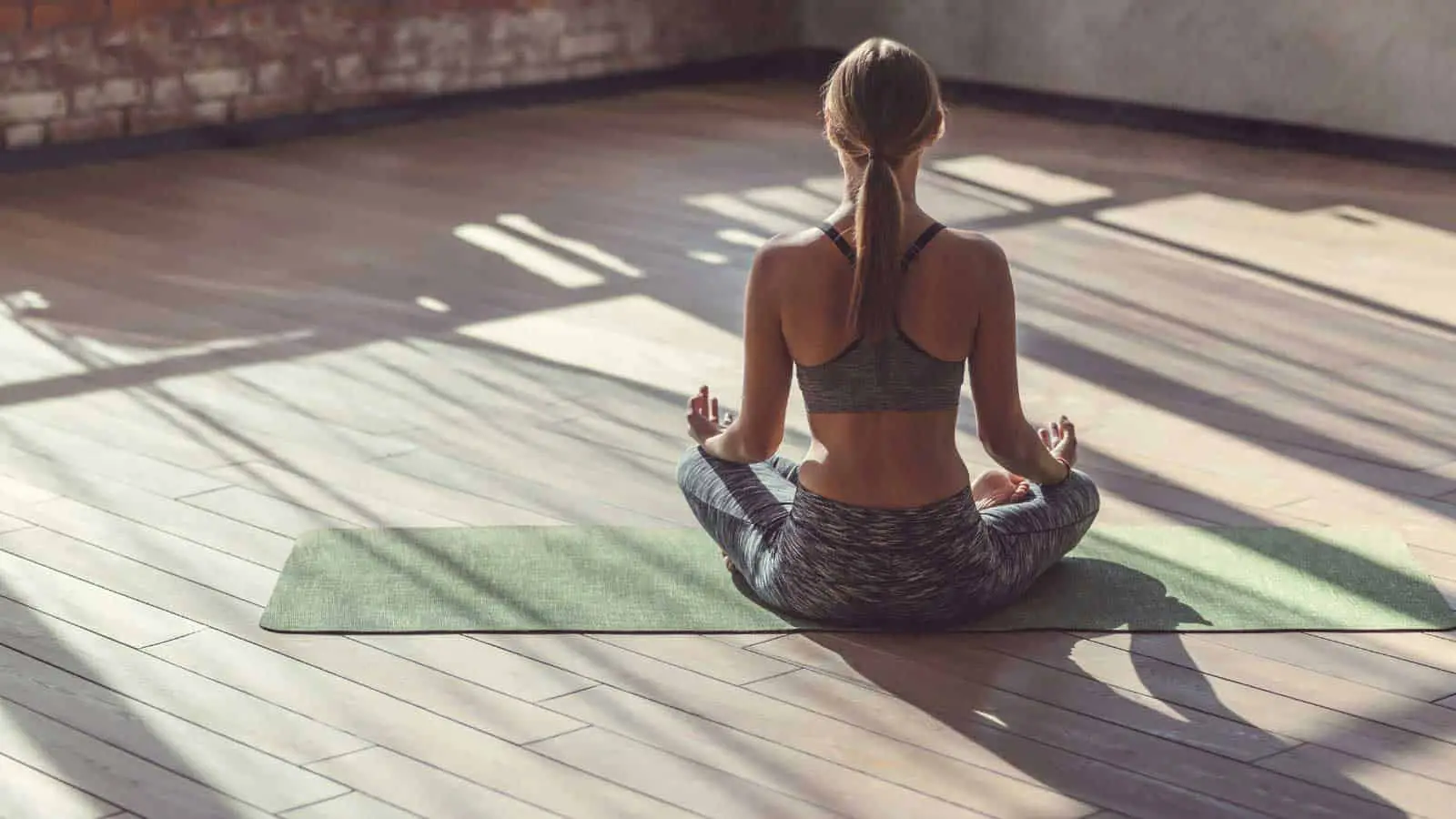We are aware of the benefits that meditation and mindfulness can bring into our lives – that’s why many people have started to approach this practice. However, when it comes down to picking the right type of meditation for your needs, many beginners find themselves overwhelmed by the variety. Among these, guided body scan meditation does stand out, and it continues to intrigue many meditation practitioners.
To do a body scan meditation, you need to know that it focuses primarily on the body’s feelings and sensations rather than the breath. After finding a comfortable position, closing your eyes, and taking a few cleansing breaths, you will begin to scan your body from head to toes.
Body scan meditation is among the most widespread types of mindful meditation, but it can feel overwhelming if you don’t know how to get started. Find out all you need to know below.
What Is a Body Scan Meditation?
First of all, it is crucial to determine what a body scan meditation is and how it differentiates itself from other meditation types. This information will help you decide whether or not it is the right practice for your lifestyle.
Body scan meditation is a type of mindful meditation that will cause you to focus primarily on how each part of your body feels rather than your breathing. A body scan can be guided, which is something of great help for beginners.
A mentor’s voice will lead you by focusing and attention on each part of your body, often starting from your head and ending on your toes. You can perform this type of meditative practice everywhere, but finding a comfortable position (either sitting or lying down) is crucial.
You might find that, in the beginning, it can be hard to focus on your body. However, with practice, you will learn to put your attention into each area of struggle. This practice can relieve stress and anxiety symptoms, including headaches, a sore jaw, and a stiff neck, alongside other pains.
How to do a body scan meditation: What You Should Know Before Starting Body Scan Meditation
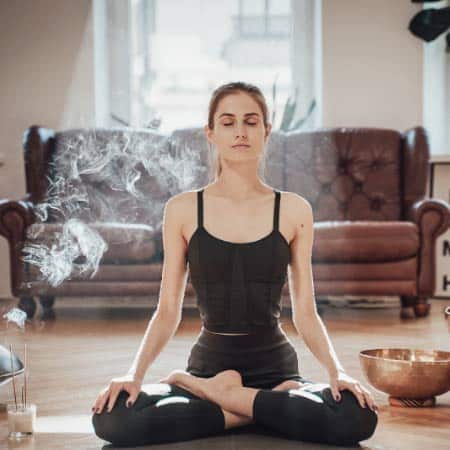
Below, you will find an easy-to-follow step-by-step guide to get started with your first body scan. However, before you find your comfortable position, it is crucial to check that you have enough time for it and you are in a place where you feel safe and comfortable.
Indeed, especially in the beginning, you might struggle to keep your focus. While this is normal and will improve with regular practice, it can be helpful to find a location where you don’t feel threatened or in a rush.
Of course, you can decide to practice only for 5-10 minutes and keep longer sessions for another time. Just make sure you have the time necessary not to feel rushed.
Additionally, you might opt for guided meditation practice at first, which is an excellent way to find the support and guidance you need every step of the way. If this is your first approach to meditation, picking a guided recording that can tell you what to do at each step might help you free up your mind and start focusing on the sensations in your body.
If you are unsure where to start, check some YoutTube videos that can offer you some guidance, but make sure you spend some time researching a mentor with whom you feel at ease before getting started.
Find the Right Environment
When approaching a body scan, it is crucial to find an environment that works for you. Of course, you can practice your meditation anywhere – even just by taking a break of a few minutes at the office.
However, if you choose to pick a location where to practice a more extended body scan, you might opt for a place where you feel safe and comfortable.
Ideally, this should be a quiet environment where you will not get disturbed. If you are indoors or even in your home, find a spot where you can sit or lay down for some time without getting too cold or hot or even disturbed by loud noises.
If you are creating your meditation room at home, make it a phone-free zone. You might also decide to have quiet, relaxing music in the background.
Alternatively, you can practice a body scan outdoors, in a garden, balcony, or even in a holy place. Just make sure you feel safe and comfortable in that place.
Find a Comfortable Position
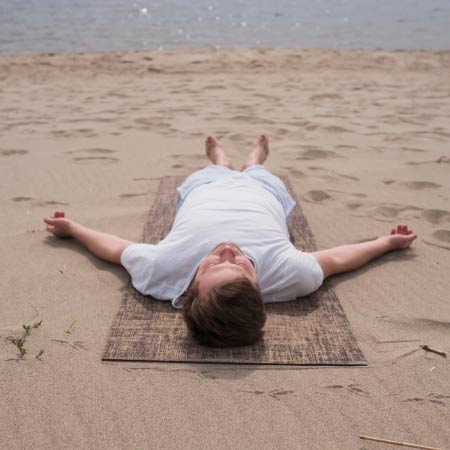
When approaching meditation, the first image that comes to mind is a serene individual sitting cross-legged. That is undoubtedly the traditional position to meditate, but you might run into the risk of getting uncomfortable after just a few minutes.
When it comes down to performing a body scan, other positions might be more accessible and suitable for your needs. Generally, you might decide to approach this practice when sitting or lying down.
If sitting, a chair or couch will do the trick. Alternatively, if you have the chance, you might decide to lie down on your yoga mat or a rug. If you are practicing to improve your sleep quality, it is recommendable that you perform your body scan before going to sleep, ideally lying down in your bed.
You might also decide to use pillows to support your legs and head and a blanket to keep you warm. If you are wearing tight-fitting clothes, loosen them up and remove your shoes.
Take a Few Breaths, Close Your Eyes, and Find Stillness
Once you have found the perfect position, it is recommendable to always start your meditation practice by taking a few long breaths. For this step, begin by taking a long inhale through the nose and an exhale through the mouth. Make these the most extended breaths you have taken all day and close your eyes.
This step is not indispensable, but it can help you detach yourself from what is going on around you. If you have had a stressful day, you might also use this time to leave those events behind.
If you are approaching a body scan for the first time, taking these crucial breaths helps you focus more and be more ready for the next steps.
Focus on Your Whole Body
Start by closing your eyes and bringing your breathing to its normal rhythm. As seen above, this kind of meditation will not focus so much on examining the breath—so, allow it to return to normal and focus on your whole body.
For this step, start bringing your attention to your whole body without singling out any part. Notice how you are sitting on the chair or lying down.
- Does your body feel light or heavy?
- Is one side of your body more uncomfortable than the other?
- Do your feet touch the floor?
- Does your neck feel stiff and painful?
Pay extra attention to those parts of your body that are in contact with the chair, mat, rug, or bed underneath you.
During this process, you will likely identify some parts of your body that feel uncomfortable or in pain. It is not necessary to adjust them or move them—notice how they feel.
Start Scanning Your Body
Now that you have a better understanding of how your whole body feels, you can start the scanning process. Ideally, you will start from the crown of your head and move down towards your feet and toes. However, if it feels more natural to you, you can also move from your feet to the head.
If you opted for guided meditation practice or in a class, your mentor or teacher would guide you through the steps of the body scanning process. So, you won’t need to think about the next part you have to focus on—you can follow simple instructions. Because of this, following a guided meditation can truly help beginners.
However, you can also practice a body scan meditation by yourself.
Start from the crown of your head and notice how that feels. Does your head feel heavy? Is your hair tie pulling your hair? Does your posture feel louched or your neck tense?
Explore all of the sensations you feel around your head and then start scanning down. You can analyze your face, jaw, neck, and shoulders. Then, move onto your chest, arms, belly, and hips. Lastly, put your attention on your legs, calves, feet, and toes.
Take It Slowly
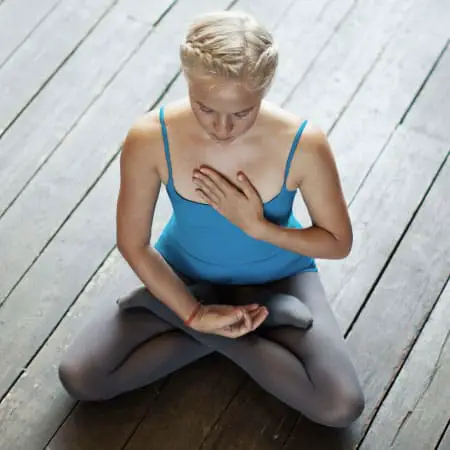
When scanning your body, it is crucial not to rush through any part. In the beginning, you will notice that you tend to rush to ensure you are not missing out on any aspect of your body. However, this might leave you to focus for much longer in certain parts than others.
To prevent this, understand how long the body scan practice you have picked is and start moving your attention slowly and steadily, without speeding up. Generally, it is recommendable to spend at least 10 to 30 seconds on each body part—depending on how long you wish your practice to be.
Return to Your Body When Your Mind Starts to Wander
If you have not been practicing meditation for long, you will notice that your mind will start to wander off every now and then. If you need to bring your mind back to your breath during other meditation practices, you will need to get it back to your body during a body scan.
It is entirely normal for your mind to wander, and you should not worry about it. However, it is crucial to notice that this happens and bring your thoughts back to your body scan. This habit will improve over time with practice.
Focus Your Attention on the Areas of Struggle
When you are scanning your body, you will notice some sensations in certain parts. You might find that some parts of your body are itchy, tingling, more relaxed, or even painful. Don’t act on it, but take notice of these sensations. Even in this case, you will notice more and more sensations as you practice—and you will be able to identify them better.
If you find some areas of struggle or more painful during the scan, you can keep your attention there for longer. This step is not mandatory, but breathing and focus are the keys to easing the pain and uncomfortable sensations you might be feeling. So, take your time to work them out.
Notice How Your Whole Body Feels
Proceed to scan your whole body. After reaching your toes (or the head, depending on your body scan), come back to the body as a whole.
Just like the first few steps of the body scan process, this moment can be extremely helpful in helping you find out how your body feels. During this step, you will notice that many parts of your body feel different from when you started your meditation session—this is normal and will only improve with practice.
During this step, put your focus on the sensations your body can feel. Does it feel lighter than when you started? Does it feel less painful or uncomfortable than before your meditation? You are likely to see that much has changed—embrace it!
Come Back and Open Your Eyes
The last step of your body scan is to come back and reopen your eyes. While this might only take a few seconds, it is a crucial step of the meditation practice. Take your time to come back to reality, and don’t rush.
You might start this last step by taking longer to inhale and a longer exhale. When you are ready, start slightly moving your extremities, fingers, and toes. Then, wiggle your legs, neck, shoulders, and arms. Lastly, open your eyes and take a few moments to see how you feel.
If you are using this type of meditation to fight insomnia and practice in bed, you can use this type of meditation to assist you in going to sleep. In this case, embrace anything you might feel and remain in a comfortable position for longer.
Body Scan vs. Other Meditation Practices: What’s the Difference?
Each practice is unique and might feel personal to the practitioner. However, most meditative practices focus primarily on examining the breath, through which you can start raising awareness of your body and mind.
Instead, body scan meditation focuses more on the sensations in your body. Of course, it is still essential to notice your breathing, and you can even use it to clear your mind for your body scan. However, the purpose of this practice is to connect to your body rather than your breath.
Is a Body Scan Meditation Right for You?
A body scan meditation might not always be the best approach to meditation for everybody. Indeed, your meditation practice should serve you and help you achieve your goals.
So, for example, if you wish to infuse your physical training with a mindful practice, you might opt to practice yoga as a meditation rather than a body scan.
Other options that you might explore for different results include breathing meditation and visualization.
Body scans are ideal for those practitioners who wish to feel more connected with their bodies. This practice is also perfect for keeping at bay stress and anxiety and assisting you in fighting insomnia and PTSD. You can determine whether this is the right type of meditation for your needs in the sections below.
Body Scan for Anxiety and Stress
If you have been researching meditation, you know that there are endless benefits associated with this practice. Among these, meditation can help every practitioner keep stress and anxiety at bay. Body scans are not different.
During the body scan process, you will put all of your focus and attention into the various body parts without leaving any behind. This exercise will cause you to discover and release the tension and struggle you are holding in your body—and you did not even need it there.
Of course, this kind of tension is highly relatable to stress and anxiety, often deriving from our lifestyles. A study conducted in 2019 shows how a body scan meditation program helped over 47 students lower cortisol levels—the hormone related to stress. The 8-week program shows us how something so brief can reduce stress levels from a physical and psychological level.
Body Scan for Insomnia and Better Sleep

Generally, all types of mindful meditation yield calming, therapeutic effects on the mind and body. You might even find specific movement-related meditation practices that can help you improve your sleep quality.
However, body scan meditation practices have been beneficial for fighting the effects of insomnia and poor sleep in adults and adolescents.
Indeed, a study conducted in 2020 on 54 teenagers struggling with insomnia shows us that regular body scan practices can reduce these effects and promote better sleeps. The participants in the study reported better sleep quality and less struggle to fall asleep. In turn, they noticed incredible benefits in their daily life during the daytime—they were less irritable and felt more energetic.
Ultimately, it is possible to consider body scan meditation practices as an alternative way to relieve the effects of insomnia and poor sleep. When it comes down to treating younger adults and adults with other conditions, body scan meditation is a safer alternative to taking sleeping pills.
Body Scan for Pain
Meditation practices and mindfulness have been used in the clinical and medical environment since the 1970s. One of the pioneers of this type of treatment is Jon Kabat-Zinn, who developed and introduced the mindfulness-based stress reduction (MBSR) program in 1979.
The 8-week program is specifically designed to relieve the symptoms of long-term illnesses and chronic pain. While the program also includes additional mindful practices, Jon Kabat-Zinn especially recommends body scans for patients looking at finding alternative solutions to fight pain.
While this practice is at its most efficient when coupled with other forms of meditation, other studies have shown that it is also effective on its own.
Body Scan for PTSD
A study conducted by The Recovery Village shows that over 3.5% of Americans (around 8 million) suffer from a form of PTSD every year. For this type of condition, antidepressants and psychological treatments are the most common course of action.
However, a 2015 study and 2016 research confirm that several improvements can be seen in Veterans who have PTSD and significant progress in this condition’s symptoms.
Extra Tips to Start Body Scan Meditation
Body scan meditation is an accessible practice to all. Both adults and adolescents can practice it safely, and it can yield endless benefits. However, just like any other type of meditation or physical training, it requires you to practice regularly to refine it and get more out of it.
Making it a steady habit in your daily routine is an excellent starting point. However, you might also feel more prone to stick to it when finding a type of practice that better resonates with you.
Here are some extra tips that can help you get started with your first body scans:
Commit to a Habit
When introducing this new routine, it can be hard to stick to it in the beginning. To encourage you to stick to a daily meditation practice, make sure you are setting the alarm for yourself. Practicing in the morning is the best way to ensure that you can get even a short body scan in your day.
However, some individuals also prefer to spend time meditating during their commute or by taking mini-meditation breaks at the office.
Remember That Each Practice Is Unique
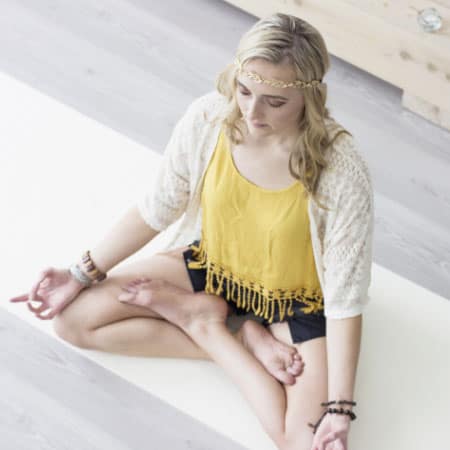
It has been seen that, with practice, regular body scans can help you feel happier and more in harmony. You are likely to see some benefits of body scans straight after you have finished your meditation session. However, the real changes happen over time.
It is recommendable not to start your practice with a specific goal in mind, as this might alternate certain feelings and sensations in your body. Additionally, having a plan for your meditation practice implies that you will either reach it or not.
This attitude can cause you to judge your meditation practice, which is something you should avoid. Remember that each approach is different, and you are bound to feel various sensations each time. Avoid judging and thinking about how it went. Instead, appreciate the feelings you can notice in your body after each practice.
Meditate Whenever You Need
When it comes down to practicing meditation, there is no right or wrong way to do it. So, you don’t need to set 30 minutes aside each day to meditate. You can practice any time, even in your office chair between a meeting and another.
These mini-meditation brakes can help you find your balance and continue your day with a clearer mindset. You might also notice a reduction in stress and anxiety.
Make Sure You Are Comfortable and Not in a Rush
When approaching any meditation, keep in mind that this time is for yourself only, and make sure you find a place where you feel safe, comfortable, and relaxed. As seen above, you can practice everywhere. However, creating a meditation nook in your home can help you stick to your routine.
Ensure the zone is phone-free and distraction-free, and you won’t get disturbed during your upcoming body scan.
Use All the Props You Need
Not everybody finds it equally comfortable to sit in the same position or lie down on a hard surface for prolonged periods. Yet, this should not stop you from reaping the benefits that a body scan can bring into your life.
So, you might decide to support your practice with props. You might use pillows or bolsters to support your knees, head, or neck. If you choose to sit down during your meditation, you might opt for a meditation pillow to help you throughout your practice.
You might also use headphones if you decide to use music or a guided body scan. Lastly, you might opt to cover yourself with a blanket to be extra comfortable during longer meditation practices.
Precautions to Take When Practicing a Body Scan Meditation
A body scan meditation is a safe practice that is accessible to most individuals. In most cases, this is an even safer alternative than taking medical treatments for some conditions seen above. However, there are some precautions that you should keep in mind before starting.
It is crucial that you don’t listen to any guided body scan meditation when driving or operating any machinery. Indeed, some people do drift off and might even fall asleep. Because of this, you should only practice when you are in a safe, protected place.
Additionally, keep in mind that your attention will be on your body rather than what is happening around you. Therefore, it is recommendable not to start any risky task before meditating.
Lastly, you should always consider speaking to your doctor before starting any meditation practice if you have any concerns.
Conclusion
A body scan meditation is a powerful practice that can yield many benefits, and it is accessible to most individuals. You can practice it for as long as you like in a place where you feel comfortable and safe. During this practice, you will primarily focus on your body and its sensations rather than your breathing. A body scan can help you raise awareness of your body and tension areas, keep at bay stress, and relieve painful areas. It can also help with fighting symptoms of PTSD and insomnia and help you feel happier.

